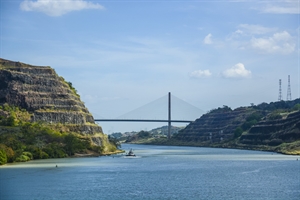South and Central America feature some of the world’s greatest natural wonders. Where else can you explore underground lakes formed by the meteor impact that took out the dinosaurs? And what about the incredible cold Patagonian desert, or the Andes, the world’s longest continental mountain range? Central and South America’s cultural experiences are not to be missed either, from carnival in Brazil to the Nazca lines in Peru.
Should I get travel vaccines before going to South America and Central America?
Because there are several dangerous illnesses endemic in Central and South America, some vaccinations will be necessary before you go.
How can I protect myself from food-borne and water-borne illnesses in South America?
You may well be exposed via food and water to disease-causing organisms during your time in South or Central America but there are a few steps you can take to reduce your risk of getting ill. First, you can get vaccinated against typhoid and hepatitis A. You should also take normal travellers’ precautions with what you eat and drink, too.
Only eat food that is hot and fresh. Raw food should be avoided, unless you can peel it yourself. For more information see our article on Food-borne diseases.
Drink only water that you know is safe. Factory-sealed bottles are fine; or water that you know has been treated. Watch out for ice in drinks: freezing does not kill disease-causing organisms. For more hints, see our article on Water-borne diseases.
If you want to swim, you should be aware that there is a risk of picking up the parasites that cause schistosomiasis (bilharzia). To avoid schistosomiasis, you should not swim or shower in fresh, untreated water (such as rivers and lakes).
Acute mountain sickness in South and Central America
If you are visiting parts of the region that lie above 2,400m then you should be aware of acute mountain sickness (altitude sickness). MyHealth Alberta has advice on altitude sickness, and you can also talk to your travel healthcare adviser if you have any concerns.
Is malaria a problem in South America?
Parts of South and Central America have a problem with malaria, and you should check the most up-to-date guidance before you go. A travel health nurse can help you to work out whether you need anti-malarials. Mosquitoes in the region carry diseases such as Zika and Dengue fever so you will need to avoid mosquito bites, too.
What about yellow fever in Central and South America?
Another mosquito-borne disease you can catch in Central and South America is yellow fever. Certain countries in the region will ask to see your international certificate of vaccination against yellow fever, so check whether you need to be vaccinated.
What other shots will I need for a trip to Central and South America?
You may need boosters for diphtheria and tetanus, and, depending on what you have planned, hep B and rabies shots could be recommended.
Canadian Travel Clinics can help you before you go to Central and South America with your travel jabs in Alberta. Make an appointment at one of our centres.

